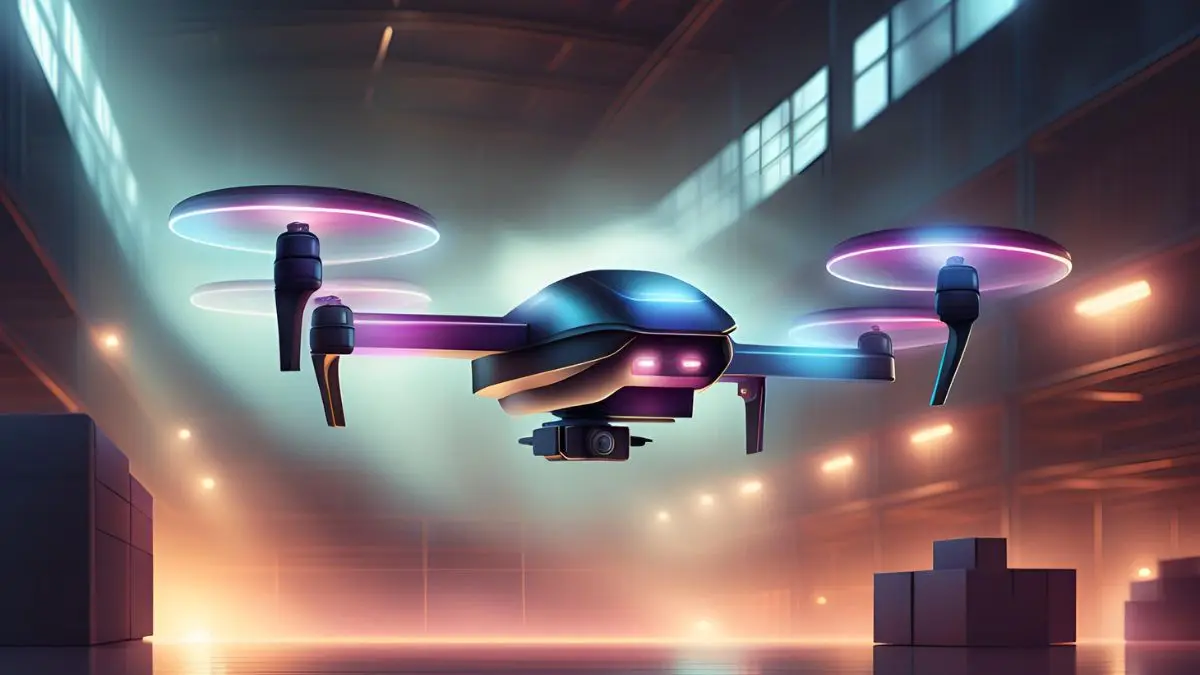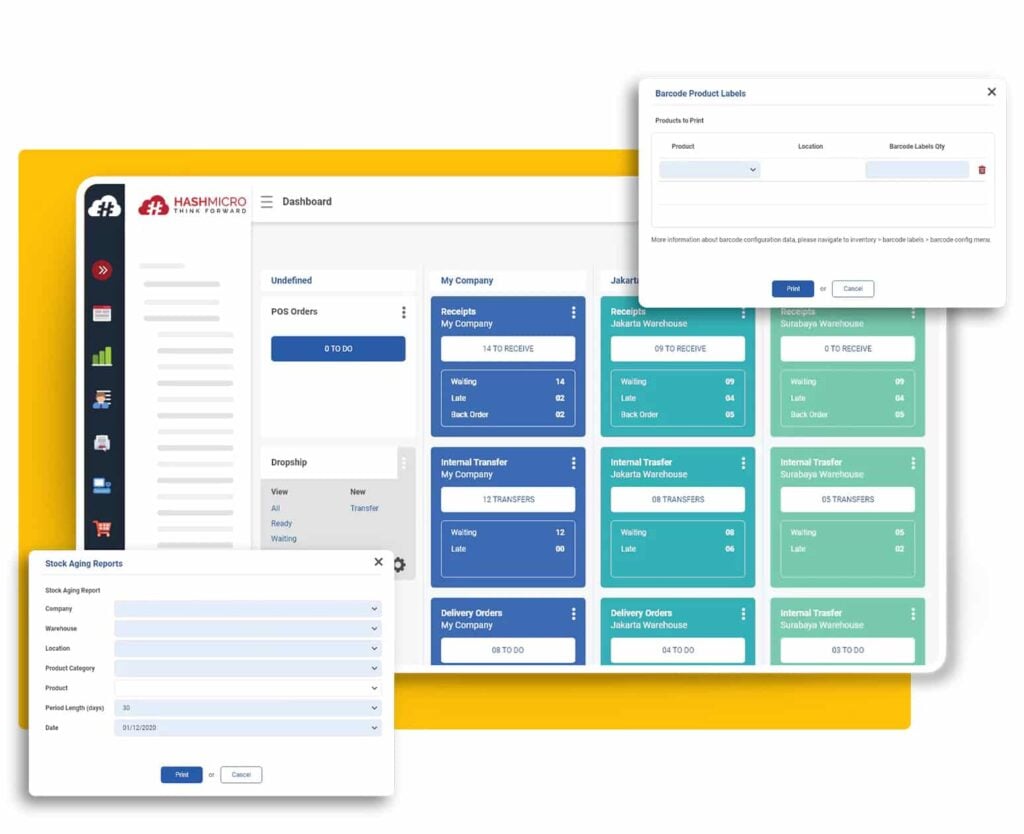In Singapore, the logistics sector is revolutionized by the adoption of AI-enhanced warehouse drones, notably by companies like YCH Group. These drones integrate with warehouse management systems to speed up inventory counting and improve accuracy.
Equipped with advanced navigation sensors, they autonomously perform tasks like automated inventory checks and 3D facility mapping, significantly boosting operational efficiency.
These advancements offer substantial benefits including resource optimization, scalability, and reduced human error. With the ability to collect and analyze real-time data, businesses are positioned to make informed decisions, enhancing their Key Performance Indicators (KPIs) and setting new standards for inventory management in Singapore.
Table of Content:
Table of Content
What are Warehouse Drones?
Warehouse drones are transforming inventory management in warehouses with their autonomous functions and advanced sensors like Stereo Vision, Ultrasonic (Sonar), Time-of-Flight, and LiDAR. These drones navigate complex environments, avoid obstacles, and gather essential data, enhancing the accuracy and efficiency of operations.
These drones automate inventory checks, create detailed 3D warehouse maps, and provide real-time data collection, drastically reducing manual labor and improving operational workflows. Their ability to quickly count items and generate precise maps aids in strategic planning and optimization, helping businesses maintain effective inventory control and make informed decisions.
Warehouse drones are transforming the logistics landscape by enhancing operational efficiency and optimizing inventory management in a range of warehouse settings. Their autonomous capabilities and advanced sensors make them invaluable tools for organizations seeking streamlined and automated warehouse operations.
How Warehouse Drones Work?
Warehouse drones are revolutionizing logistics with their advanced sensors like Stereo Vision, Ultrasonic (Sonar), Time-of-Flight, and LiDAR, which facilitate precise navigation and obstacle avoidance within complex warehouse layouts. But how exactly do they work? Let’s break down their process:
- Data Capture and Scanning: Equipped with high-resolution cameras, barcode scanners, and RFID readers, warehouse drones fly through aisles capturing real-time data on stock levels and item locations. This eliminates the need for manual inventory checks.
- Autonomous Navigation: Using GPS, LiDAR, and advanced sensors, drones navigate warehouse spaces independently. They avoid obstacles and follow pre-mapped routes to ensure complete and efficient coverage.
- Inventory Tracking: As drones scan shelves, they instantly compare the captured data with the warehouse management system. This helps identify missing, misplaced, or overstocked items, ensuring accurate stock records.
- Cycle Counting: Instead of shutting down operations for lengthy manual counts, drones perform quick and precise cycle counts. This reduces downtime and minimizes human error.
- Real-Time Data Syncing: All the data collected by drones is automatically updated in the inventory management system, providing up-to-date insights for better decision-making.
By using warehouse drones, businesses streamline their inventory processes, reduce costs, and improve overall efficiency. It’s a high-tech solution for modern supply chain challenges.
What Can Warehouse Drones do?
Warehouse drones are transforming the logistics and supply chain industry by taking on crucial tasks with speed and precision. But what can warehouse drones actually do? These high-tech devices go beyond simple flying — they play an essential role in optimizing warehouse operations.
- Inventory Scanning: Drones equipped with barcode and RFID scanners can quickly and accurately track stock, reducing manual labor and errors.
- Stock Monitoring: They provide real-time data on product locations and quantities, keeping inventory records up to date.
- Cycle Counting: Drones can perform regular audits of inventory without disrupting daily operations.
- Surveillance and Security: They monitor warehouse spaces to prevent theft and ensure safety.
- Damage Inspection: Drones equipped with cameras can check for damaged goods, reducing the need for physical inspections.
With their ability to automate time-consuming tasks and improve accuracy, warehouse drones are becoming an indispensable part of modern inventory management.
Main Applications in Warehouses
Warehouse drones have emerged as valuable assets in the logistics landscape of Singapore, offering a multitude of applications within warehouse settings. These innovative autonomous flying devices are revolutionizing inventory management processes, contributing to improved operational efficiency and accuracy.
One of the primary applications of warehouse drones is automated inventory checks. These drones are capable of swiftly and accurately counting the number of cartons or pallets in a warehouse, significantly reducing the time and manpower required for traditional manual counting methods. By automating this process, businesses can optimize their resources and allocate human capital to more strategic tasks.
Warehouse drones also excel in 3D facility mapping, a powerful application that enables businesses to create detailed maps of warehouse layouts. Through advanced sensors and cameras, drones can capture precise measurements and dimensions, providing a comprehensive and up-to-date view of the entire warehouse. This 3D facility mapping facilitates better operational planning, layout optimization, and efficient product placement.
In addition to inventory checks and 3D facility mapping, warehouse drones enable real-time data collection. Equipped with onboard sensors and cameras, these drones can collect and transmit accurate, up-to-date information on inventory levels, product locations, and other crucial metrics. This real-time data empowers businesses to make informed decisions, quickly react to changing demand, and streamline their overall inventory management processes.
Embracing the main applications of warehouse drones, businesses in Singapore can witness a remarkable improvement in operational efficiency and inventory management. With automated inventory checks, 3D facility mapping, real-time data collection, and using barcode tracking software, organizations can optimize their processes, allocate resources wisely, and stay one step ahead in a highly competitive market.
Benefits of Implementing Warehouse Drones
Implementing warehouse drones offers numerous benefits for businesses. One of the key advantages is resource optimization, as drones can handle low-value tasks such as inventory counting, freeing up human resources for more strategic and value-added activities.
Warehouse drones also offer scalability, as they can be deployed in warehouses of various sizes to meet the specific needs of the business. By reducing the reliance on manual labor, drones minimize the risk of human error and ensure more accurate inventory management.
Additionally, drones enable proactive inventory management by providing real-time data, allowing businesses to make informed decisions and take necessary actions in a timely manner. The use of warehouse drones ultimately leads to improved Key Performance Indicators (KPIs) and overall efficiency in warehouse operations.
Integrating Warehouse Drones with Warehouse Management System
Integrating warehouse drones with warehouse management system (WMS) is revolutionizing inventory management by automating and streamlining processes, enhancing accuracy and efficiency.
Drones equipped with sensors and cameras update inventory records in real-time as they scan product barcodes, ensuring that stock levels are always current and reducing manual checks. This integration enables instant data synchronization between the physical stock movement and digital records, minimizing discrepancies and enhancing inventory accuracy.
Drones also enhance operational capabilities, allowing warehouses to respond quickly during peak demands and manage resources more effectively. They can rapidly verify stock, identify misplacements, or detect damaged goods, improving both inventory management and quality control.
Furthermore, the use of drones reduces the physical strain on warehouse workers by automating high-risk tasks like high-shelf picking and extensive inventory checks. This not only improves safety and reduces workplace risks but also boosts worker satisfaction and overall productivity.
The integration of drones with WMS represents a significant step towards creating safer, more efficient, and technologically advanced warehouse environments.
Optimize Your Warehouse Management with HashMicro Warehouse Management Software
Enhance your warehouse operations with HashMicro Warehouse Management Software, seamlessly integrated with advanced warehouse drone technology. This integration boosts inventory management efficiency, as drones provide real-time data updates directly to HashMicro’s system, reducing discrepancies and improving stock control.
Moreover, HashMicro WMS paired with warehouse drones enhances decision-making and operational planning. The system analyzes complex data from drones to optimize forecasting. This leads to increased productivity, improved safety, and reduced operational costs, keeping your business competitive in a fast-evolving industry.
If you find yourself curious about the capabilities of our system, you can register for a free demo now!
Conclusion
Warehouse drones are transforming the logistics and supply chain industry by taking on crucial tasks with speed and precision. These high-tech devices go beyond simple flying — they play an essential role in optimizing warehouse operations.
By automating inventory checks, creating detailed 3D warehouse maps, and providing real-time data collection, drones drastically reduce manual labor and improve operational workflows. Their ability to quickly count items and generate precise maps aids in strategic planning and optimization, helping businesses maintain effective inventory control and make informed decisions.
As businesses seek to enhance efficiency and accuracy in their inventory management processes, the integration of advanced technologies becomes essential. This is where HashMicro’s Warehouse Management Software (WMS) comes in. By seamlessly integrating with warehouse drones, HashMicro’s WMS ensures real-time data updates, reducing discrepancies and improving stock control.
The system analyzes complex data from drones to optimize forecasting, leading to increased productivity and reduced operational costs. If you’re ready to take your warehouse operations to the next level, consider exploring the capabilities of HashMicro’s innovative solutions.





































